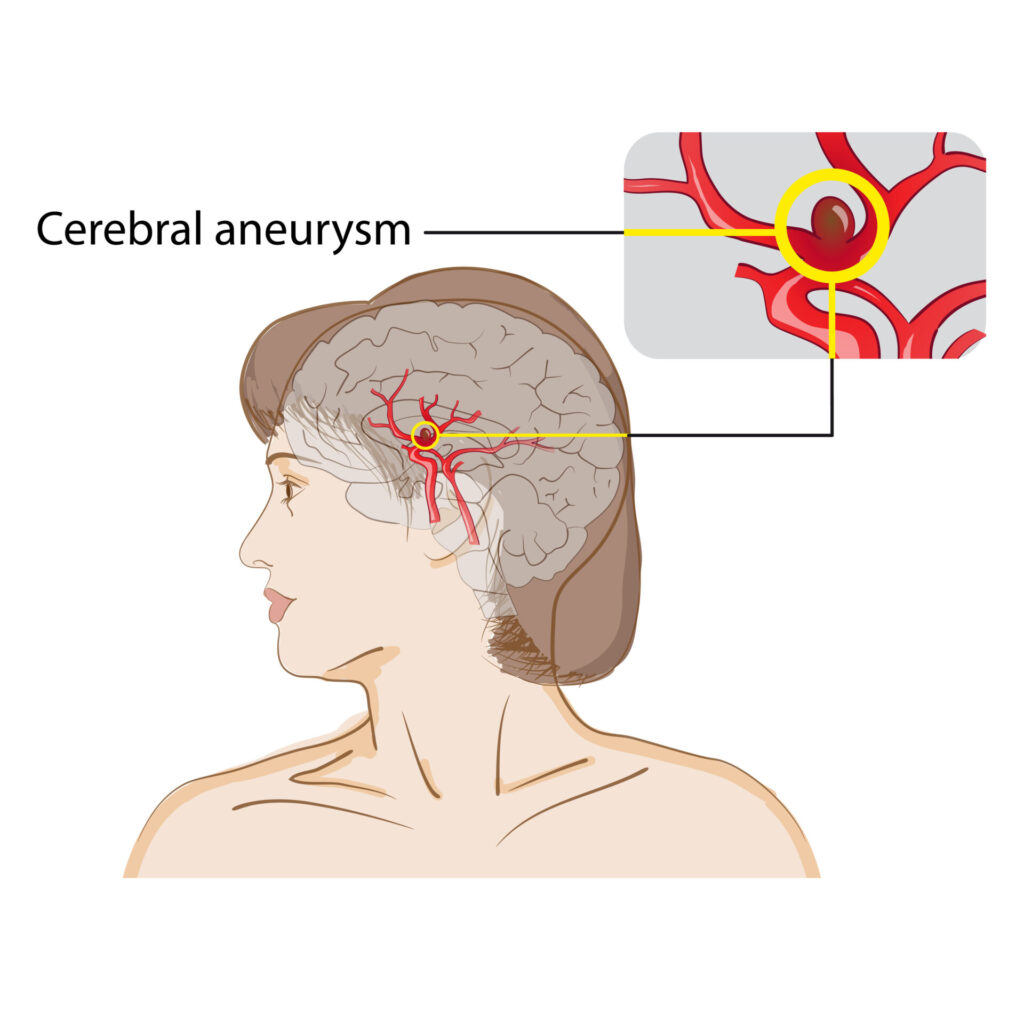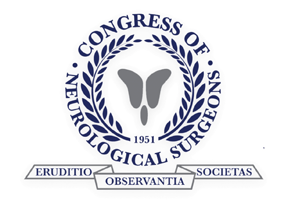A brain aneurysm, also called a cerebral aneurysm, is a bulge that develops in a weakened area of a blood vessel or artery located in or near your brain. When part of the blood vessel or artery wall wears out and becomes thin, a blister-like bulge can form. As the aneurysm fills with flowing blood, the wall can stretch further and become thinner. Like a balloon filled with too much air, the aneurysm can eventually rupture, causing a life-threatening medical emergency.

What Causes a Blood Vessel or Artery to Wear Down?
The wearing of a blood vessel or artery wall can be caused by either genetics or health factors such as:
- Chronic high blood pressure
- Excessive alcohol consumption
- Ongoing stress
- Smoking
- Substance use (especially cocaine)
- Too much strain on the body (like heavy lifting)
What Are Some Stats on Brain Aneurysms in the US?
- According to the Brain Aneurysm Foundation, roughly 7 million people (or 1 out of every 50) have an unruptured brain aneurysm.
- Every year, roughly 30,000 patients in the US experience a ruptured brain aneurysm.
- Of the estimated 500,000 worldwide deaths caused by brain aneurysms, half are people younger than 50.
- Most brain aneurysms develop in people 40 or older, but the general age range for developing them is 35-60.
- Women are 5 times more likely to experience a rupture than men.
- A ruptured brain aneurysm is fatal 50% of the time, and 66% of survivors suffer permanent neurological or physical complications.
- The average aneurysm is considered small – 1/8 inch to 1 inch – and is less likely to rupture than those that exceed 1 inch in length.
- Up to 80% of all aneurysms do not rupture.
What Are the Signs of a Brain Aneurysm?

Unruptured Brain Aneurysm
Patients with unruptured brain aneurysms often do not realize they have one. Small, unruptured aneurysms tend not to show signs of their development. If they do cause symptoms, you may experience effects similar to those of a stroke:
- Double vision
- Headaches
- Numbness or weakness on one side of the face
- Pain around the eye
- Short-term memory loss
- Trouble balancing
- Trouble speaking
- Vision loss
Ruptured Brain Aneurysm
If you have a brain aneurysm that has ruptured, you will certainly experience symptoms that can include:
- Body stiffness
- Extreme sensitivity to light
- Immediate confusion
- Instant feeling of sickness
- Intense headache, worse than you’ve ever experienced
- Loss of consciousness
- Seizures
- Weakness on one side of your whole body
If you or someone around you exhibits these signs suddenly, call 911 immediately. This is a time-sensitive, life-threatening medical emergency.
What Are the After Effects of a Brain Aneurysm?
Patients who survive a ruptured brain aneurysm are likely to also experience additional medical complications caused by the rupture, including:
- Hemorrhagic stroke – a brain bleed that fills the space between your brain and skull.
- Subarachnoid hemorrhage (SAH) – a brain bleed wherein blood leaks into the thin tissues of the arachnoid layer that covers the brain.
If a patient experiences either of these complications, they will likely experience lasting symptoms such as:
- Permanent brain damage
- Vasospasm – a narrowing or clamping of your blood vessels, preventing enough oxygen from reaching your brain
- Hydrocephalus – a painful pressure on the brain from a buildup of blood or cerebrospinal fluid deep within the brain.
- Chronic seizures
Some patients may fall into a coma after their ruptured aneurysm and others (roughly 50%) pass away.
What Are the Risk Factors for a Ruptured Brain Aneurysm?
As mentioned, some patients are predisposed to developing a brain aneurysm due to genetic factors, while other external factors also play a part. The same factors that can cause an aneurysm to develop – high blood pressure, stress, bodily strain, smoking, and substance use – can also cause the aneurysm to burst.
The biggest risk factor on the list is high blood pressure since it forces blood to push harder against the artery walls. If an area of the wall is already thin and weak, the added pressure will likely stretch it to its breaking point.
If you have high blood pressure or conditions that raise your blood pressure, work to address the root issue to lower your chances of experiencing a ruptured aneurysm:
- Address any chronic stress or anger issues.
- Do not lift, carry, or push heavy items (including exercise weights).
- Talk to your doctor about taking blood pressure medications.
Additional Risk Factors for a Rupture
- Location of development – Aneurysms are more likely to rupture if they have developed on the posterior communicating arteries (back of the brain) or the anterior communicating arteries (front of the brain).
- Number of aneurysms – People with multiple aneurysms significantly increase the likelihood of one rupturing.
- Patient’s age – Patients older than 70 are more likely to experience a rupture than younger patients.
- Sex – The amount of women who experience a rupture is 1.5 times higher than men.
- Shape – An aneurysm with an irregular shape is more likely to rupture than a normally shaped aneurysm.
- Size – Larger aneurysms are more likely to rupture than smaller ones.
If you have an aneurysm or want to know if you have developed one, talk to the team at Georgia Neurosurgical Institute.
Our renowned neurosurgeons offer diagnostic testing, analysis, and treatment for brain aneurysms. We will evaluate the growth of your aneurysm and discuss treatment options and lifestyle suggestions to lower your risk of experiencing a rupture. To schedule an aneurysm screening or consultation, call us today at 478-743-7092.
Related Articles







